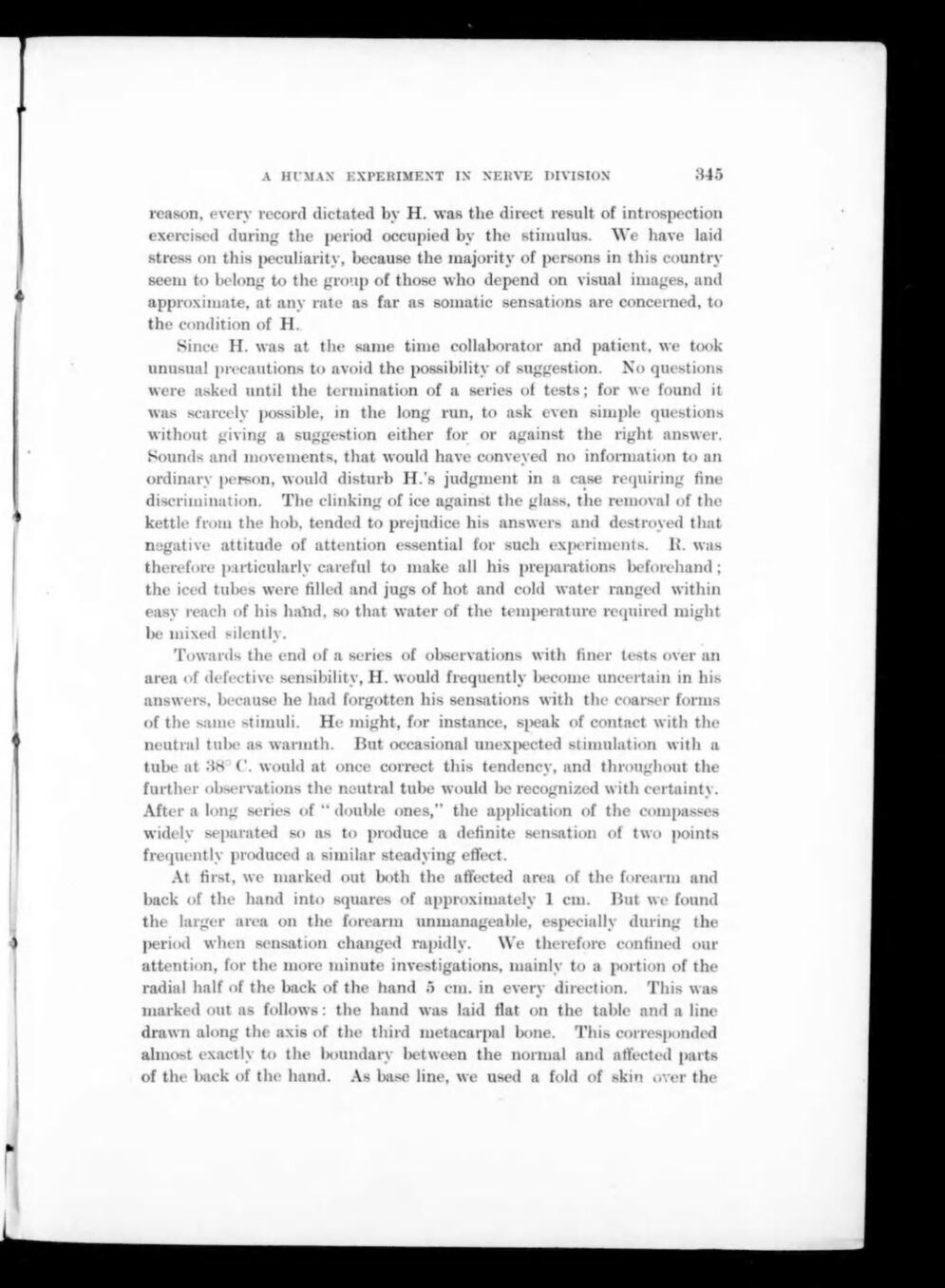reason, every record dictated by H. was the direct result of introspection exercised during the period occupied by the stimulus. We have laid stress on this peculiarity, because the majority of persons in this country seem to belong to the group of those who depend on visual images, and approximate, at any rate as far as somatic sensations are concerned, to the condition of H.
Since H. was at the same time collaborator and patient, we took unusual precautions to avoid the possibility of suggestion. No questions were asked until the termination of a series of tests; for we found it was scarcely possible, in the long run, to ask even simple questions without giving a suggestion either for or against the right answer. Sounds and movements, that would have conveyed no information to an ordinary person, would disturb H.'s judgment in a case requiring fine discrimination. The clinking of ice against the glass, the removal of the kettle from the hob, tended to prejudice his answers and destroyed that negative attitude of attention essential for such experiments. R. was therefore particularly careful to make all his preparations beforehand; the iced tubes were filled and jugs of hot and cold water ranged within easy reach of his hand, so that water of the temperature required might be mixed silently.
Towards the end of a series of observations with finer tests over an area of defective sensibility, H. would frequently become uncertain in his answers, because he had forgotten his sensations with the coarser forms of the same stimuli. He might, for instance, speak of contact with the neutral tube as warmth. But occasional unexpected stimulation with a tube at 38° C. would at once correct this tendency, and throughout the further observations the neutral tube would be recognized with certainty. After a long series of "double ones," the application of the compasses widely separated so as to produce a definite sensation of two points frequently produced a similar steadying effect.
At first, we marked out both the affected area of the forearm and back of the hand into squares of approximately 1 cm. But we found the larger area on the forearm unmanageable, especially during the period when sensation changed rapidly. We therefore confined our attention, for the more minute investigations, mainly to a portion of the radial half of the back of the hand 5 cm. in every direction. This was marked out as follows: the hand was laid flat on the table and a line drawn along the axis of the third metacarpal bone. This corresponded almost exactly to the boundary between the normal and affected parts of the back of the hand. As base line, we used a fold of skin over the
